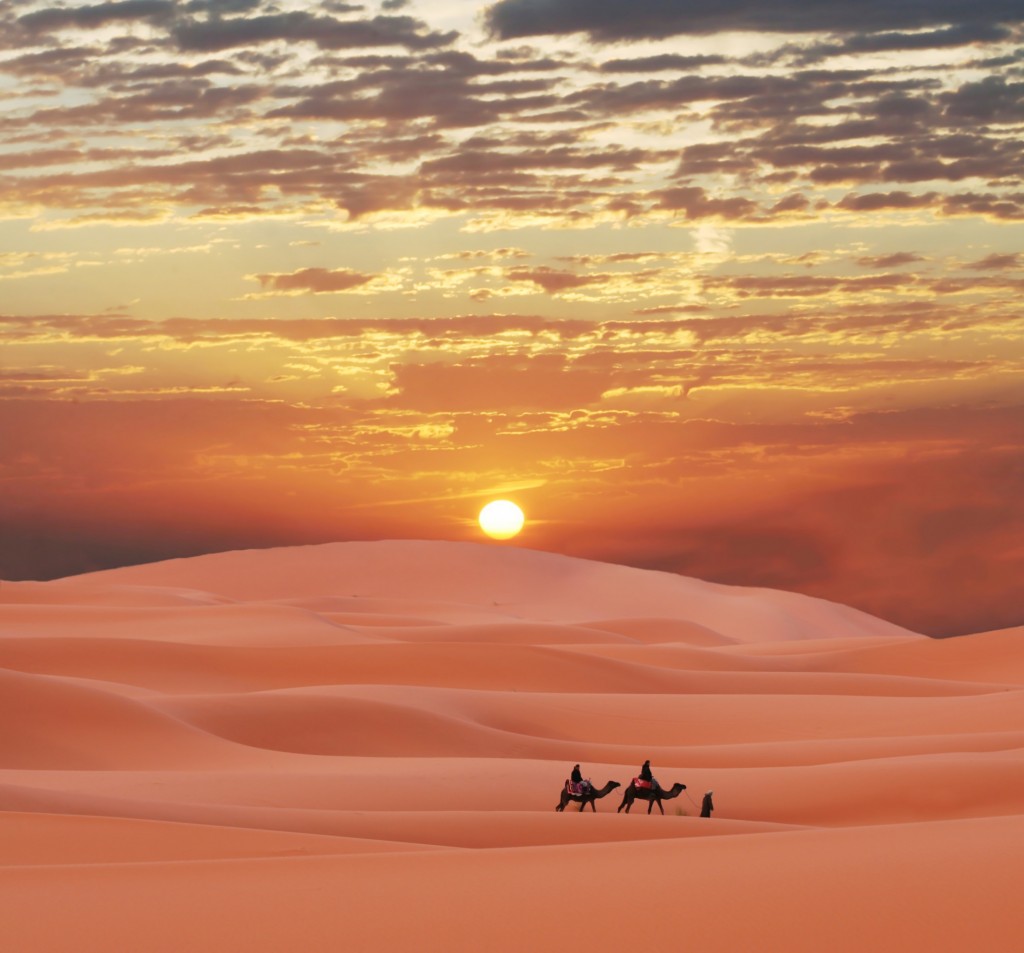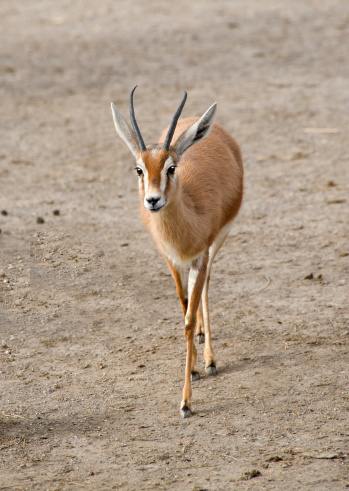1,1-dibromopropane 1H NMR
The 1H NMR spectrum of an unknown compound shows the following signals: triplet, quintet and triplet (relative integrals 1:2:3, respectively)
/////////////////
SAHARA DESERT, NORTH AFRICA
Hi Everyone. Our trip today is definitely something different. We are
going to North Africa to the Sahara Desert to see the area and some of
the animals that live there.
The Sahara is the world's hottest desert. At over 3,600,000 square
miles (9,400,000 square kilometers) it covers most of North Africa,
making it almost as large as China or the United States.
Some of the sand dunes can reach 590 feet (180 meters) in height. The
desert landforms of the Sahara are shaped by wind or by occasional
rains and include sand dunes and dune fields, stone plateaus, gravel
plains, dry valleys, and salt flats. Unusual landforms include the
Richat Structure in Mauritania.
Several deeply dissected mountains and mountain ranges, many volcanic,
rise from the desert.
Most of the rivers and streams in the Sahara are seasonal or intermittent,
the chief exception being the Nile River, which crosses the desert
from its origins in central Africa to empty into the Mediterranean.
Underground aquifers sometimes reach the surface.
The central part of the Sahara is hyper-arid, with little vegetation.
The northern and southern reaches of the desert, along with the
highlands, have areas of sparse grassland and desert shrub, with trees
and taller shrubs in moisture collects.
The Sahara has one of the harshest climates in the world. The
north-easterly wind often cause sand storms and dust devils. When this
wind reaches the Mediterranean, it is known as sirocco and often
reaches hurricane speeds in North Africa and southern Europe. Half of
the Sahara receives less than 0.79 inches of rain per year, and the
rest receives up to 3.9 inches per year. The rainfall happens very
rarely, but when it does it is usually torrential when it occurs after
long dry periods. Recent signals indicate that the Sahara and
surrounding regions are greening because of increased rainfall.
Satellite imaging shows extensive greening of the southern area
between 1982 and 2002, and in both Eastern and Western Sahara a more
than 20-year-long trend of increased grazing areas and flourishing
trees and shrubs has been observed.
On February 18, 1979, snow fell in several places in southern Algeria,
including a half-hour snowstorm that stopped traffic in Ghardaïa, and
was reported as being "for the first time in living memory". The snow
was gone within hours. Several Saharan mountain ranges, however,
receive snow more regularly. Although relative humidity is low in the
arid environment, the absolute humidity is high enough for moisture to
condense when driven up a mountain range. In winter, temperatures drop
low enough on the Tahat summit to cause snow on average every three
years; the Tibesti Mountains receive snow on peaks over 8,200 feet
once every seven years on average. On January 18, 2012, snow fell in
several places in western Algeria. Strong winds blew the snow across
roads and buildings in Béchar Province.
The Sahara comprises several distinct ecoregions, and with their
variations in temperature, rainfall, elevation, and soil, they harbor
distinct communities of plants and animals.
I hope you enjoy this trip to the Sahara Desert.
~
MAP

THE SAND















FEZZEN, LIBYA DESERT







MORROCO DESERT


CHAD DESERT

ALGERIA DESERT








ALGERIA, GETTING WATER FROM AN AQUAFER ?
SLEEPERS MOSQUE, TUNISIA

WATER



TREES, FLOWERS, GRASS










CAMELS
NOTICE THE DIFFERENT SHADE OF COLOR OF THE CAMELS
AND THE DIFFERENT WAYS THEY ARE RIDDEN














ELEPHANT



SCORPION


GERBIL MERIONES
GIRAFFES
LEOPARD


OSTRICH


SAND DRAGON LIZARD

FENNEC FOX


HYENA



BROWN HYENA

AFRICAN CHEETAH

JERBOA


RED TAILED HAWK
GAZELLE


SCIMITAR HORNED ORYX

RHINOCEROS

BEETLE

MONITOR LIZARD

AFRICAN MEERKAT
THORNY DEVIL LIZARD

GOLDEN JACKAL

DESERT TORTOISE

OCELLATUS

DESERT GOATS

BARBARY SHEEP


ADDAX


DESERT HEDGEHOG

IBEX

UNKNOWN ANIMAL







.jpg)

//////////
Hi Everyone. Our trip today is definitely something different. We are
going to North Africa to the Sahara Desert to see the area and some of
the animals that live there.
going to North Africa to the Sahara Desert to see the area and some of
the animals that live there.
The Sahara is the world's hottest desert. At over 3,600,000 square
miles (9,400,000 square kilometers) it covers most of North Africa,
making it almost as large as China or the United States.
miles (9,400,000 square kilometers) it covers most of North Africa,
making it almost as large as China or the United States.
Some of the sand dunes can reach 590 feet (180 meters) in height. The
desert landforms of the Sahara are shaped by wind or by occasional
rains and include sand dunes and dune fields, stone plateaus, gravel
plains, dry valleys, and salt flats. Unusual landforms include the
Richat Structure in Mauritania.
desert landforms of the Sahara are shaped by wind or by occasional
rains and include sand dunes and dune fields, stone plateaus, gravel
plains, dry valleys, and salt flats. Unusual landforms include the
Richat Structure in Mauritania.
Several deeply dissected mountains and mountain ranges, many volcanic,
rise from the desert.
rise from the desert.
Most of the rivers and streams in the Sahara are seasonal or intermittent,
the chief exception being the Nile River, which crosses the desert
from its origins in central Africa to empty into the Mediterranean.
Underground aquifers sometimes reach the surface.
the chief exception being the Nile River, which crosses the desert
from its origins in central Africa to empty into the Mediterranean.
Underground aquifers sometimes reach the surface.
The central part of the Sahara is hyper-arid, with little vegetation.
The northern and southern reaches of the desert, along with the
highlands, have areas of sparse grassland and desert shrub, with trees
and taller shrubs in moisture collects.
The northern and southern reaches of the desert, along with the
highlands, have areas of sparse grassland and desert shrub, with trees
and taller shrubs in moisture collects.
The Sahara has one of the harshest climates in the world. The
north-easterly wind often cause sand storms and dust devils. When this
wind reaches the Mediterranean, it is known as sirocco and often
reaches hurricane speeds in North Africa and southern Europe. Half of
the Sahara receives less than 0.79 inches of rain per year, and the
rest receives up to 3.9 inches per year. The rainfall happens very
rarely, but when it does it is usually torrential when it occurs after
long dry periods. Recent signals indicate that the Sahara and
surrounding regions are greening because of increased rainfall.
Satellite imaging shows extensive greening of the southern area
between 1982 and 2002, and in both Eastern and Western Sahara a more
than 20-year-long trend of increased grazing areas and flourishing
trees and shrubs has been observed.
north-easterly wind often cause sand storms and dust devils. When this
wind reaches the Mediterranean, it is known as sirocco and often
reaches hurricane speeds in North Africa and southern Europe. Half of
the Sahara receives less than 0.79 inches of rain per year, and the
rest receives up to 3.9 inches per year. The rainfall happens very
rarely, but when it does it is usually torrential when it occurs after
long dry periods. Recent signals indicate that the Sahara and
surrounding regions are greening because of increased rainfall.
Satellite imaging shows extensive greening of the southern area
between 1982 and 2002, and in both Eastern and Western Sahara a more
than 20-year-long trend of increased grazing areas and flourishing
trees and shrubs has been observed.
On February 18, 1979, snow fell in several places in southern Algeria,
including a half-hour snowstorm that stopped traffic in Ghardaïa, and
was reported as being "for the first time in living memory". The snow
was gone within hours. Several Saharan mountain ranges, however,
receive snow more regularly. Although relative humidity is low in the
arid environment, the absolute humidity is high enough for moisture to
condense when driven up a mountain range. In winter, temperatures drop
low enough on the Tahat summit to cause snow on average every three
years; the Tibesti Mountains receive snow on peaks over 8,200 feet
once every seven years on average. On January 18, 2012, snow fell in
several places in western Algeria. Strong winds blew the snow across
roads and buildings in Béchar Province.
including a half-hour snowstorm that stopped traffic in Ghardaïa, and
was reported as being "for the first time in living memory". The snow
was gone within hours. Several Saharan mountain ranges, however,
receive snow more regularly. Although relative humidity is low in the
arid environment, the absolute humidity is high enough for moisture to
condense when driven up a mountain range. In winter, temperatures drop
low enough on the Tahat summit to cause snow on average every three
years; the Tibesti Mountains receive snow on peaks over 8,200 feet
once every seven years on average. On January 18, 2012, snow fell in
several places in western Algeria. Strong winds blew the snow across
roads and buildings in Béchar Province.
The Sahara comprises several distinct ecoregions, and with their
variations in temperature, rainfall, elevation, and soil, they harbor
distinct communities of plants and animals.
variations in temperature, rainfall, elevation, and soil, they harbor
distinct communities of plants and animals.
I hope you enjoy this trip to the Sahara Desert.
~
MAPTHE SAND


FEZZEN, LIBYA DESERT
MORROCO DESERT

CHAD DESERT

ALGERIA DESERT

ALGERIA, GETTING WATER FROM AN AQUAFER ?
SLEEPERS MOSQUE, TUNISIA
WATER
TREES, FLOWERS, GRASS


CAMELS
NOTICE THE DIFFERENT SHADE OF COLOR OF THE CAMELS
AND THE DIFFERENT WAYS THEY ARE RIDDEN


ELEPHANT

SCORPION
GERBIL MERIONES
GIRAFFES
LEOPARD
OSTRICH
SAND DRAGON LIZARD

FENNEC FOX
HYENA

BROWN HYENA
AFRICAN CHEETAH
JERBOA
RED TAILED HAWK
GAZELLE
SCIMITAR HORNED ORYX
RHINOCEROS

BEETLE
MONITOR LIZARD
AFRICAN MEERKAT
THORNY DEVIL LIZARD
GOLDEN JACKAL
DESERT TORTOISE

OCELLATUS
DESERT GOATS
BARBARY SHEEP
ADDAX

DESERT HEDGEHOG
IBEX
UNKNOWN ANIMAL




.jpg)
//////////
No comments:
Post a Comment